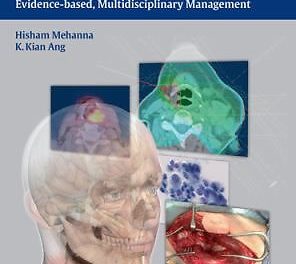Editors: Tony C.K. Tham, John S.A. Collins and Roy M. Soetikno:
Publisher: Wiley-Blackwell -221 pages
Book Review by: Nano Khilnani
This book is not just on gastroenterology or a discussion of the many topics in this medical specialty that deals with various parts of the gastrointestinal (GI) tract.
It is specifically aimed at emergencies and complications that such specialists in this field run into during procedures such as a colonoscopy (examination of the insides of the large intestine) or at any point when diagnosing and treating patients.
Drs. Tham, Collins and Soetikno, the editors of this book and all gastroenterologists, have done an excellent job of compiling materials for this informative book from over
40 specialists, most of them doctors and experts in various medical specialties. Most are physicians and surgeons, and some of them are professors and-or researchers.
There are 33 chapters in this book spread over its three sections. The contributors’ names are mentioned as authors of each particular chapter. Some of them have contributed to writing multiple chapters or parts thereof. What really makes the book important is the collective expertise of these specialists in a single document.
There is a detailed seven-page index that helps the reader get quickly, easily to any keyword such as a complication or a disease to study on it in detail.
This compact book of a little over 200 pages is filled with many full-color photographs with captions that make learning easier. Especially helpful are remarkable images of the insides of the esophagus and other portions of the GI tract. Some of these photos include instruments such as different types of scopes and stents used to perform various tasks, such as removing objects or sealing up perforations.
There are also tables that itemize details relating to a problem, discovery or disorder. There are also a lot of charts and graphs, computed tomography (CT) scans, and clear, detailed illustrations of body organs.
The tables in the book facilitate understanding. The details in the tables are many. Some of them are: approaches, causes, complications, definitions, recommended drugs, risks, solutions, and types, of a condition, disease or disorder.
For example. Table 4.4 – Comparison of Symptoms of Common Causes of Acute Abdominal Pain (2) – lists the onset, location, character, descriptor, radiation and intensity of each condition that is the source of pain.
The sources of pain itemized are: appendicitis, cholecystitis (inflammation of the gall bladder), pancreatitis (inflamed pancreas), diverticulitis (inflammation of that part of the colon or large intestine called the diverticulum), perforated peptic ulcer (breaks in the inside walls of the stomach), small bowel obstruction, mesenteric ischemia-infarct (deficient flow of blood to the mesentery, a part of the GI tract, causing tissue to deaden).
Other sources of pain itemized are: ruptured abdominal aortic aneurysm (tearing apart of a blood vessel due to dilation), gastroenteritis (inflammation of the membrane or wall of the stomach or small intestines), pelvic inflammatory disease (located in the lower area of the body called pelvis), and ruptured ectopic pregnancy (pregnancy or gestation occurring elsewhere than the usual place which is the uterus, causing a rupture or breakage)
This book has three sections. Section 1 is entitled Approach to Specific Presentations. In this section 1 (chapters 1 through 7) are presented a broad array of complications – both major and minor – that patients have when they go see their primary doctor and are then referred to gastroenterologists.
The problems could range from dysphagia (difficulty in passing food from the esophagus to the stomach) to vomiting to upper or lower gastrointestinal bleeding to mild or acute abdominal pain to jaundice to diarrhea, or a number of these symptoms combined.
Complications of Gastrointestinal Procedures is the title of Section 2. Each of the nine chapters in this section (chapters 9 through 16) focuses on a single procedure. The procedure could be exploratory such as an endoscopy – use of an instrument to look inside a part of the human body – or a removal of tissue to look at under a microscope called a biopsy. The use of ultrasound devices aids in seeing multi-dimensional views.
The third section of this book, entitled Specific Conditions (chapters 17 through 33) examines other issues such as objects (called foreign bodies) getting stuck in the esophagus or tube that carries food; a perforation of this tube or in the small or large intestine (colon) such as a hole or slit as the result of an examination or removal of tissue; obstructions anywhere in the intestines; and acute pancreatitis.
Other emergencies and complications discussed in this section are: acute pain in bile ducts or the gall bladder, the presence of “stones” in either of these organs; acute appendicitis; acute liver failure, and rupture and profuse bleeding in dilated veins called variceal hemorrhage.
Also covered in this section are: alcoholic hepatitis or inflammation of the liver caused by excessive consumption of liquor; peritonitis or inflammation of the peritoneum, a part of the gastrointestinal tract; acute severe ulcerative colitis or breaks in the interior membrane of the colon causing inflammation and pain; gastrointestinal complications of the human immunodeficiency virus (HIV); diverticular disease, pertaining to the diverticulum located in the sigmoid section of the colon.
Chapter 31 entitled Gastrointestinal Infections, is an important one to read, especially for health officials. We sometimes wonder about the causes of gastrointestinal diseases, and the deaths that result from them, especially in underdeveloped and developing countries. The authors of this chapter – Graham Morrison and John S. Collins – point out that infectious diarrhea affects a very significant portion of the populations in these areas. There are an estimated 1.8 billion episodes of childhood diarrhea per year in the developing world, they write, and diarrheal disease is responsible for approximately three million deaths per year in children under five years old.
This is a highly useful book for physicians dealing with emergency situations and complications relating to any part of the digestive system – the esophagus, stomach, small intestine, colon (including all its portions), liver, pancreas, bile ducts and other organs. We commend the editors and all contributors for creating this valuable and outstanding book.






